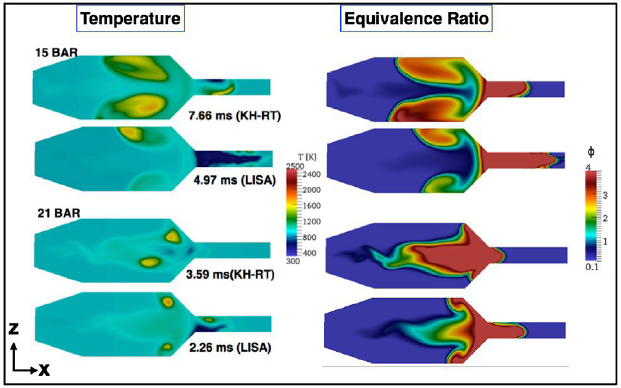


Numerical simulations were conducted to systematically assess the effects of different spray models on the ignition delay predictions and compared with experimental measurements obtained at the KAUST ignition quality tester (IQT) facility. The influence of physical properties and chemical kinetics over the ignition delay time is also investigated. The IQT experiments provided the pressure traces as the main observables, which are not sufficient to obtain a detailed understanding of physical (breakup, evaporation) and chemical (reactivity) processes associated with auto-ignition. A three-dimensional computational fluid dynamics (CFD) code, CONVERGE™, was used to capture the detailed fluid/spray dynamics and chemical characteristics within the IQT configuration. The Reynolds-averaged Navier-Stokes (RANS) turbulence with multi-zone chemistry sub-models was adopted with a reduced chemical kinetic mechanism for n-heptane and iso-octane. The emphasis was on the assessment of two common spray breakup models, namely the Kelvin-Helmholtz/Rayleigh-Taylor (KH-RT) and linearized instability sheet atomization (LISA) models, in terms of their influence on auto-ignition predictions. Two spray models resulted in different local mixing, and their influence in the prediction of auto-ignition was investigated. The relative importance of physical ignition delay, characterized by spray evaporation and mixing processes, in the overall ignition behavior for the two different fuels were examined. The results provided an improved understanding of the essential contribution of physical and chemical processes that are critical in describing the IQT auto-ignition event at different pressure and temperature conditions, and allowed a systematic way to distinguish between the physical and chemical ignition delay times.